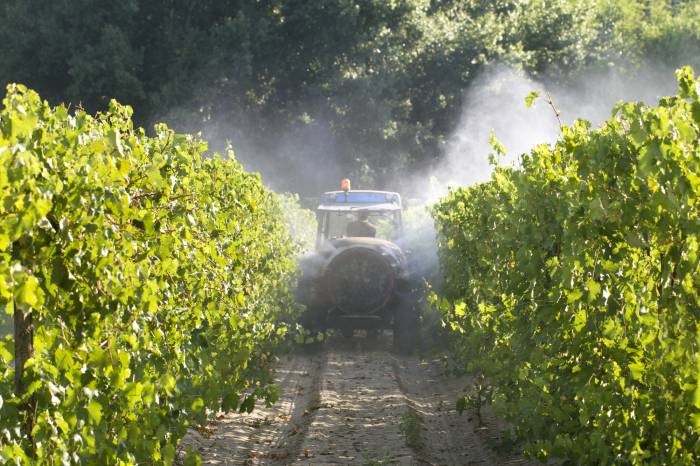Young Children Near Vineyards Face Higher Pesticide Exposure, Study Finds
Research shows contamination in urine, dust and air rises sharply during spraying periods, raising concerns for rural families
2025-09-23

Children as young as three living near French vineyards are being exposed to significantly higher levels of agricultural chemicals, according to a recent study by Santé Publique France and the National Agency for Food, Environmental and Occupational Health Safety (ANSES). The research, conducted between 2021 and 2022, analyzed chemical contamination in urine, dust, and air samples from 265 sites across six major wine-growing regions: Grand Ouest, Bourgogne Franche-Comté, Auvergne Rhône-Alpes, Provence-Alpes-Côte d'Azur, Occitanie, and Nouvelle-Aquitaine.
The study found that people living within 500 meters of vineyards had 45 percent higher levels of chemical contamination in their urine compared to those living at least a kilometer away from any crop. The presence of chemicals in household dust was found to be ten times higher near vineyards, while air samples showed contamination levels twelve times greater than in areas farther from viticulture. These figures increased sharply during periods when vines were being sprayed with pesticides. During these times, urine contamination rose by 60 percent, dust by 700 percent, and air by a factor of twelve.
The chemicals detected included glyphosate and other plant protection products such as fungicides, herbicides, and insecticides. The study highlighted that young children are particularly at risk due to their frequent contact with soil and surfaces where chemical residues can accumulate.
Despite the clear evidence of increased exposure, the researchers did not establish a direct link between these chemical levels and specific health outcomes such as cancer. Benoît Vallet, Director General of ANSES, stated that there is currently no proven connection between the measured exposure levels and clinical health effects in humans. The study also could not draw firm conclusions about exposure among vineyard workers because only a small number participated.
The findings align with previous studies from the United States and the Netherlands that have shown higher pesticide exposure for people living near vineyards or other intensive agricultural zones. The French research suggests that simple measures like reducing house ventilation during spraying periods and removing shoes before entering homes could help lower exposure risks in rural communities.
Environmental advocacy group Générations Futures expressed concern over the government’s progress toward its goal of reducing pesticide use by half by 2030. The group called for larger buffer zones around vineyards where spraying is restricted and urged a stronger shift toward organic farming practices to protect public health.
The issue of pesticide exposure in wine regions remains a contentious topic in France, which is one of the world’s largest wine producers. As scientific evidence mounts about the risks associated with proximity to treated vineyards, pressure is growing on both policymakers and the wine industry to find safer ways to manage crops while protecting local residents—especially children—from potential harm.
Founded in 2007, Vinetur® is a registered trademark of VGSC S.L. with a long history in the wine industry.
VGSC, S.L. with VAT number B70255591 is a spanish company legally registered in the Commercial Register of the city of Santiago de Compostela, with registration number: Bulletin 181, Reference 356049 in Volume 13, Page 107, Section 6, Sheet 45028, Entry 2.
Email: [email protected]
Headquarters and offices located in Vilagarcia de Arousa, Spain.